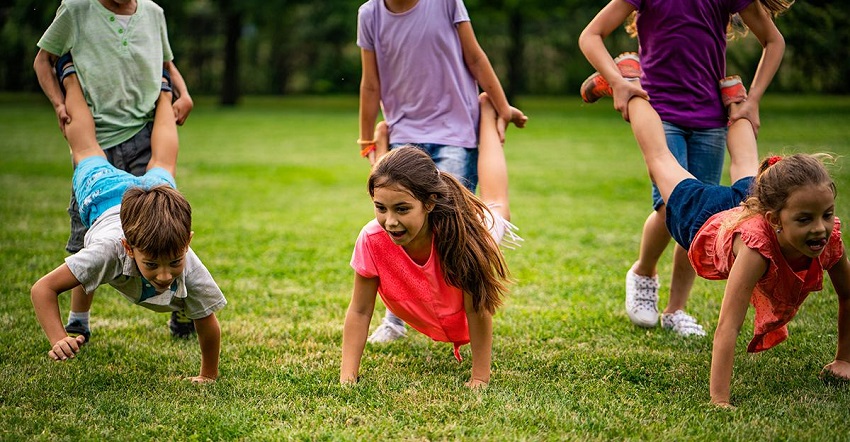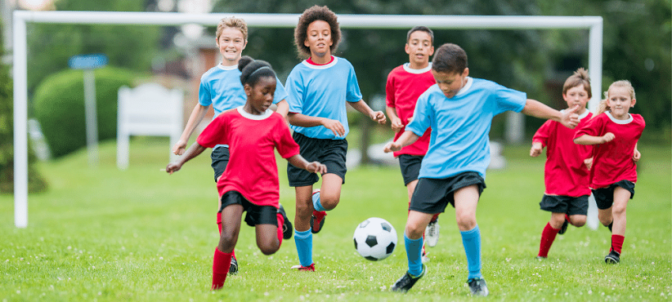As students, the journey of education isn’t just confined to textbooks and classrooms; it’s a holistic experience that encompasses physical and mental well-being. In this article, we’re diving into the realm of physical activities for students, unraveling the benefits, types, and tips to strike a balance between academics and a healthy lifestyle. This idea is presented by Downloadteam.org.
Why Physical Activities Matter for Students
Physical activities offer a refreshing break from the sedentary nature of studying. They invigorate the body, enhance blood circulation, and release endorphins, the feel-good hormones. These factors collectively contribute to improved focus and concentration, essential attributes for successful learning.
Types of Physical Activities
Structured Sports and Team Games
Participating in team sports like soccer, basketball, or volleyball fosters teamwork, communication, and discipline. These activities teach students how to collaborate, strategize, and handle pressure – skills that are transferrable to academic and professional life.
Individual Fitness Regimens
Engaging in different types of physical activity such as jogging, yoga, or weightlifting allows students to tailor their exercise to their preferences and schedules. This independence encourages a sense of responsibility and commitment.
Recreational Activities
Recreational activities like hiking, dancing, or swimming provide an enjoyable way to stay active. They can be pursued casually, offering a break from the rigor of studies.
The Link Between Physical Activity and Academic Performance
Research has established a strong connection between physical activities and academic achievement. Engaging in exercise improves memory retention, cognitive function, and problem-solving abilities. Students who maintain an active lifestyle often exhibit higher levels of creativity and critical thinking.
Strategies to Incorporate Physical Activities
Creating Active Study Breaks
Short bursts of physical activity during study breaks refresh the mind and body. Simple stretches or brisk walks can do wonders in reducing stress and promoting alertness.
Joining Campus Fitness Clubs
Many educational institutions offer fitness clubs where students can participate in group workouts. These clubs provide a sense of community, making exercise more enjoyable.
Walking or Biking to Campus
Choosing to walk or bike to campus instead of driving not only promotes physical fitness but also reduces carbon footprint. It’s a win-win for health and the environment.
Overcoming Challenges to Stay Active
Busy Schedules and Time Management
Academic commitments can make it challenging to allocate time for physical activities. However, effective time management can help create a balanced routine.
Lack of Motivation
Maintaining motivation can be tough, but setting achievable goals, finding an exercise buddy, or trying new activities can reignite enthusiasm.
Benefits Beyond the Body
Stress Reduction and Mental Health
Physical activities are a natural stress reliever. Engaging in exercise reduces anxiety and depression, promoting a positive mindset.
Enhanced Cognitive Function
Exercise increases blood flow to the brain, enhancing cognitive abilities and information retention.
Social Interaction and Networking
Participating in group activities fosters new friendships and expands social circles, contributing to holistic personal development.
Making Physical Activities a Lifelong Habit
Instilling the habit of regular physical activity during student years lays the foundation for a healthier adulthood. The lessons learned in balancing academics and exercise become valuable life skills.
Conclusion
Balancing academic pursuits with physical activities is essential for student success. By prioritizing exercise, students can enjoy improved physical health, mental well-being, and academic performance. It’s not just about the body; it’s about nurturing a holistic, thriving student experience.
FAQs (Frequently Asked Questions)
Q: How often should students engage in physical activities?
A: Aim for at least 150 minutes of moderate exercise per week, as recommended by health experts.
Q: Can physical activities replace study time?
A: They shouldn’t replace study time entirely, but they can enhance focus and overall well-being.
Q: What if I’m not a fan of traditional sports?
A: Explore various activities like dance, hiking, or even gardening to find something you enjoy.
Q: How can I manage time effectively to include exercise in my routine?
A: Set a schedule that includes designated exercise slots and stick to it as you would with study sessions.
Q: Can physical activities help with exam stress?
A: Absolutely. Engaging in physical activities can significantly reduce stress and improve your mental state during exams.
